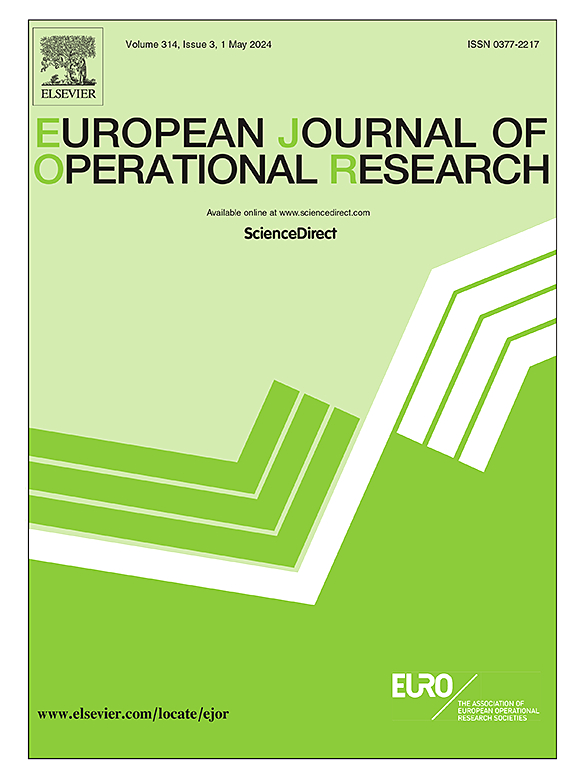优化电子零售环境中的交付系统:用于交付区域划分的加权自组织映射
IF 6
2区 管理学
Q1 OPERATIONS RESEARCH & MANAGEMENT SCIENCE
引用次数: 0
摘要
今天,网上零售业务已经很成熟。然而,管理分散的当日、次日或即时交付仍然是一个重大挑战。这需要精确的车辆路线和调度,这取决于有效的交付区域划分。为了解决这个问题,本文开发了一种新的加权自组织地图交付区域划分(WSOM-DRP)模型,该模型联合生成交付集群,并为每个集群中的电子订单提供最佳收集点。使用来自第三方物流提供商的真实数据,我们的模型使用常见的聚类性能指标,旅行距离和计算时间,对替代聚类方法(k-means, Ward分层聚类,模糊c-means)进行评估。对不同簇数的综合敏感性分析证实了该模型的稳健性,显示与次优方法相比,旅行距离减少了36%,特别是在高密度和高流量的情况下。此外,它显著提高了聚类质量(例如,跨场景的剪影指数至少提高了15%),与第二快的基准测试相比,计算时间减少了18%。这些发现突出了WSOM-DRP在不同操作条件和不同集群粒度下优化交付操作的实用价值和适应性。该模型还提供了在选择集群数量时如何平衡效率增益和操作复杂性的指导。我们提出的WSOM-DRP模型通过生成高效的配送分区并在在线结账时推荐最优的电子订单收集地点,提供了一种高效且经济的电子商务解决方案。本文章由计算机程序翻译,如有差异,请以英文原文为准。
Optimizing delivery systems within the e-retail context: a weighted self-organizing map for delivery region partitioning
Today, e-tailing operations are well-established. However, managing dispersed same-day, next-day, or immediate deliveries remains a significant challenge. This necessitates refined vehicle routing and scheduling, which depends on efficient partitioning of the delivery regions. To tackle this, this paper develops a novel Weighted Self-Organizing Map Delivery Region Partitioning (WSOM-DRP) model that jointly generates delivery clusters and suggests optimal collection points for e-orders within each cluster. Using real data from a third-party logistics provider, our model is evaluated against alternative clustering methods (k-means, Ward hierarchical clustering, fuzzy c-means) using common clustering performance measures, travel distance and computation time. A comprehensive sensitivity analysis across varying cluster numbers confirms the model’s robustness, showing travel distance reduction of up to 36 % compared to the second-best method, particularly in high-density and high-traffic scenarios. Additionally, it yields significant improvements in clustering quality (e.g., a minimum of 15 % improvement in the silhouette index across scenarios) and an 18 % reduction in computation time compared to the next fastest benchmark. These findings highlight the practical value and adaptability of WSOM-DRP for optimizing delivery operations under diverse operational conditions and across different cluster granularities. The model also offers guidance on how to balance efficiency gains with operational complexity when selecting the number of clusters. By generating efficient delivery partitions and recommending optimal e-order collection locations during online checkout, our proposed WSOM-DRP model offers an e-commerce solution which is delivery efficient and cost-effective.
求助全文
通过发布文献求助,成功后即可免费获取论文全文。
去求助
来源期刊

European Journal of Operational Research
管理科学-运筹学与管理科学
CiteScore
11.90
自引率
9.40%
发文量
786
审稿时长
8.2 months
期刊介绍:
The European Journal of Operational Research (EJOR) publishes high quality, original papers that contribute to the methodology of operational research (OR) and to the practice of decision making.
 求助内容:
求助内容: 应助结果提醒方式:
应助结果提醒方式:


